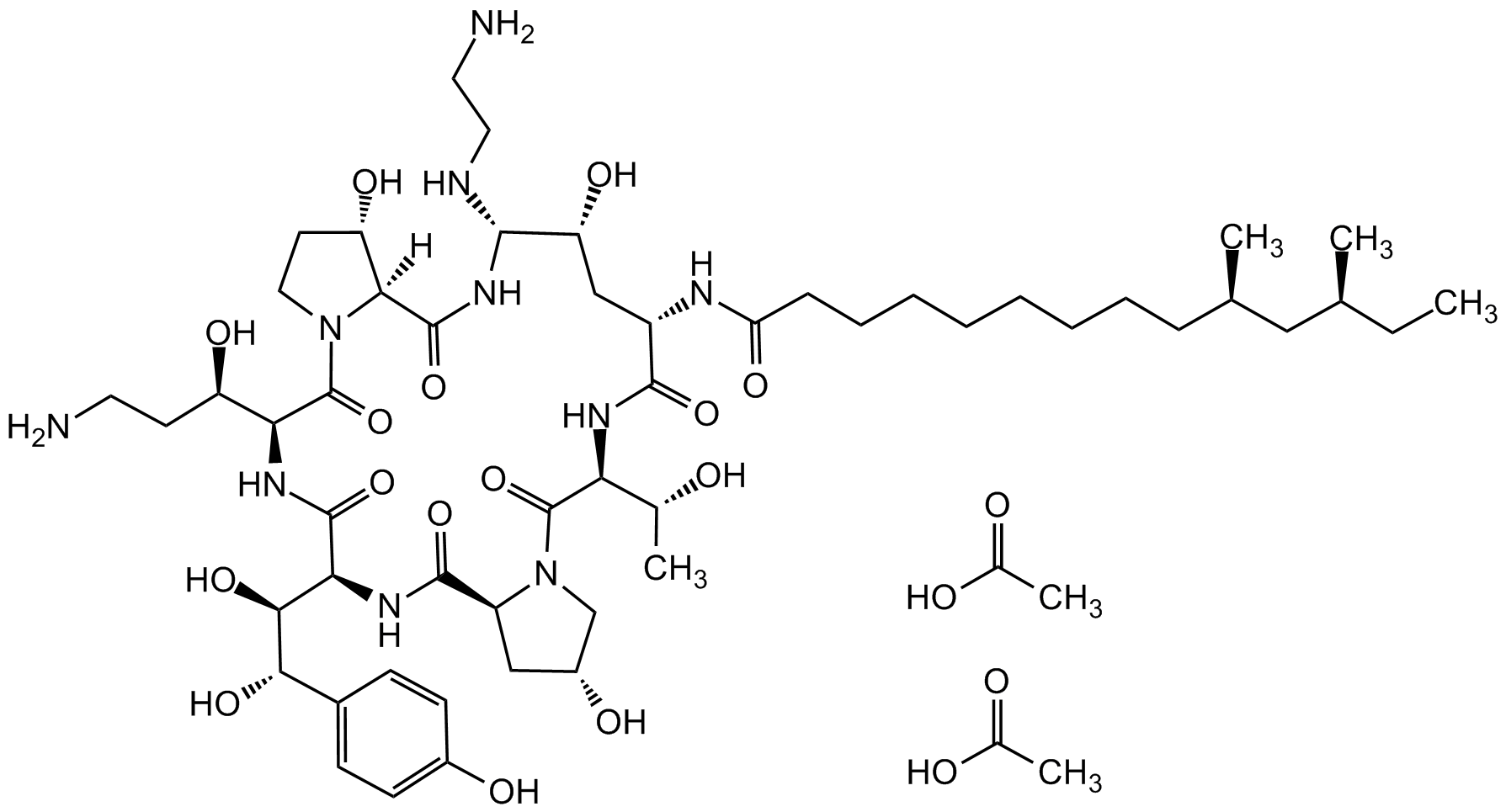
Chemical Structure
Caspofungin diacetate
CDX-C0267
CAS Number179463-17-3
Product group Chemicals
Estimated Purity>98%
Molecular Weight1213.42
Overview
- SupplierChemodex
- Product NameCaspofungin diacetate
- Delivery Days Customer10
- CAS Number179463-17-3
- CertificationResearch Use Only
- Estimated Purity>98%
- Molecular FormulaC52H88N10O15 . 2C2H4O2
- Molecular Weight1213.42
- Scientific DescriptionCaspofungin acetate is an antifungal compound that is classified as an echinocandin. It is a semi-synthetic analogue of pneumocandin B0 with improved water solubility, a significant limitation in the development of the echinocandin class as pharmaceuticals. Caspofungin acetate acts by non-competititvely inhibiting the enzyme 1,3-beta glucan synthase and preventing the synthesis of glucan and distutbing the integrity in the fungal cell wall. This agent is used in fungal cell wall biosynthesis research to study the role of beta-1,3-D-glucans in cell wall integrity and fungal survival under various environmental and chemical stresses. It is effective against disseminated or invasive aspergillosis and candidiasis in mice. - Chemical. CAS: 179463-17-3. Formula: C52H88N10O15 2C2H4O2. MW: 1213.42. Caspofungin acetate is an antifungal compound that is classified as an echinocandin. It is a semi-synthetic analogue of pneumocandin B0 with improved water solubility, a significant limitation in the development of the echinocandin class as pharmaceuticals. Caspofungin acetate acts by non-competititvely inhibiting the enzyme 1,3-beta glucan synthase and preventing the synthesis of glucan and distutbing the integrity in the fungal cell wall. This agent is used in fungal cell wall biosynthesis research to study the role of beta-1,3-D-glucans in cell wall integrity and fungal survival under various environmental and chemical stresses. It is effective against disseminated or invasive aspergillosis and candidiasis in mice.
- SMILESOC(C)=O.O=C([C@H]([C@@H](CCN)O)NC([C@H]([C@@H]([C@H](C(C=C1)=CC=C1O)O)O)NC([C@H](C2)N(C[C@@H]2O)C([C@H]([C@@H](C)O)NC([C@@H](NC(CCCCCCCC[C@@H](C)C[C@@H](C)CC)=O)C3)=O)=O)=O)=O)N4[C@@](C(N[C@@H]([C@@H]3O)NCCN)=O)([H])[C@@H](O)CC4.O=C(C)O
- Storage Instruction-20°C,2°C to 8°C
- UNSPSC12352200


![Caspofungin Acetate [179463-17-3]](https://www.targetmol.com/group3/M00/36/89/CgoaEGayQCGEZ9v9AAAAAK84u7Y115.png)